Explore Alaska’s Heartland National Parks by Ferry
This article originally appeared on National Park Trips
Alaska's best-kept secret is its incredible ferry system that will make your national park vacation one of the most memorable ever. Here's a complete Alaska heartland itinerary on how to travel by ferry, car and train to see Denali, Kenai Fjords and Wrangell-St. Elias national parks.
Route Map
Alaska Marine Highway System Ferries
While popular images of travelers in Alaska often involve a giant cruise ship, there's an incredible 3,000-mile ferry system along Alaska's coast that you can board with (or without) your vehicle to explore this majestic state and some of its most fascinating national parks.
The ferries, which are part of the Alaska Marine Highway System, are just an everyday way of life for Alaskan locals who want to reach some of Alaska's most remote coastal towns. But the system is also built to cater to adventurous travelers and is a fantastic way to explore Alaska. When you're planning your trip, it's important to know there are two types of ferries. Mainline ferries sail thousands of miles, enabling you to board with your car, enjoy sleeping and dining quarters and make multiple stops. There are even movie theaters onboard some of these ferries. Or you can choose short, smaller shuttle ferries with fewer amenities that provide daily service between nearby towns. Smaller ferries are easier to book last-minute, but you'll want to book the larger ferries that cover greater distances three-to-six months in advance of your trip.
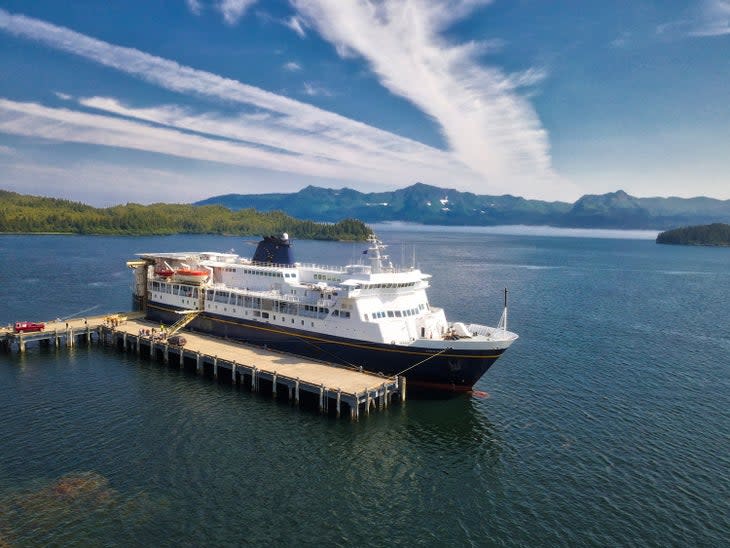
On this Alaska Heartland itinerary, you'll board a mainline ferry in Bellingham, Wash., to reach the towns closest to Kenai Fjords National Park, Denali National Park and Wrangell-St. Elias National Park & Preserve. Along the way, you'll experience the best of south central Alaska. Unlike a cruise ship, you'll be exiting your ferry at Whittier, Alaska, and doing your own exploring by vehicle before getting back on a ferry at Valdez to sail to Whittier to catch your mainline ferry back to Bellingham, Wash. If you want to return to the mainland United States by car instead, it's a 40-hour drive from Valdez to Bellingham, Wash. Either way, plan for a two-week vacation --or more if you have time -- to really experience the gorgeous landscapes and historic towns of south central Alaska.
4.5-Day Journey to Whittier, Alaska
Start in Bellingham, Wash., where you'll board your multi-day ferry named the MV Kennicott to Whittier, Alaska, a town tucked on the Bellingham Bay. This route leaves from Bellingham four times in July 2022. It's a 4.5-day journey on the boat during which you'll travel past Alaska's Inner Passage. Be sure to book direct unless you want to stop in Juneau, in which case you will board the MV Matanuska and spend two days in Juneau before switching vessels to the MV Kennicott. The MV Kennicott, which can accommodate 499 passengers, has a cafeteria-style restaurant, a movie lounge and a children's play area. From the ferry decks and in observation lounges lined with big windows, you can relax in comfortable chairs and see glaciers, temperate rainforests, whales and more on the ferry ride to Whittier. And your ferry captain will point out these natural wonders to ensure you don't miss them.
"If our captains see anything of interest to passengers, they'll slow down and point it out," says Danielle Doyle, marketing manager of the Alaska Marine Highway System. "They want to show off our state."
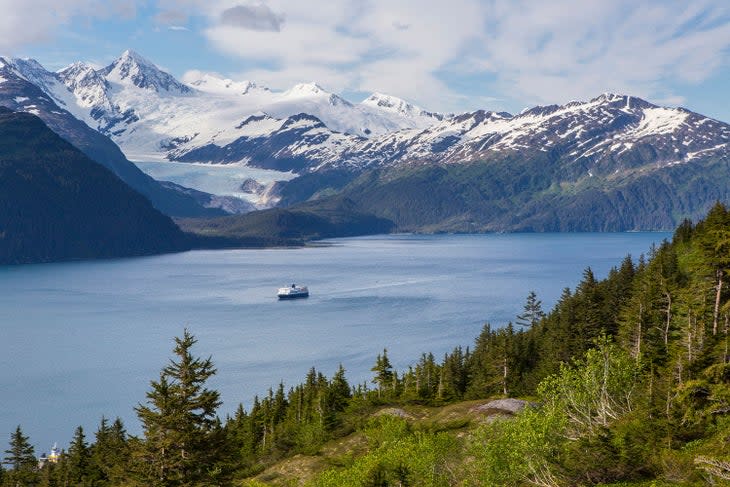
At night, you'll have several options for sleeping, depending on your budget. You can reserve a room that sleeps four with two bunk beds, plus a private bathroom. Or you can opt for a smaller cabin that sleeps two in a bunk bed and has access to shared bathrooms and showers down the hall. If you're more adventurous and budget-conscious, you can bring your tent, duct tape it to the ferry deck and sleep under the stars. There's also a heated glass solarium on the upper decks of the boat where some travelers choose to unfurl their sleeping bags each night. If you sleep in your tent or in the solarium, you'll have access to shared restrooms and showers.
Exploring Whittier and Beyond
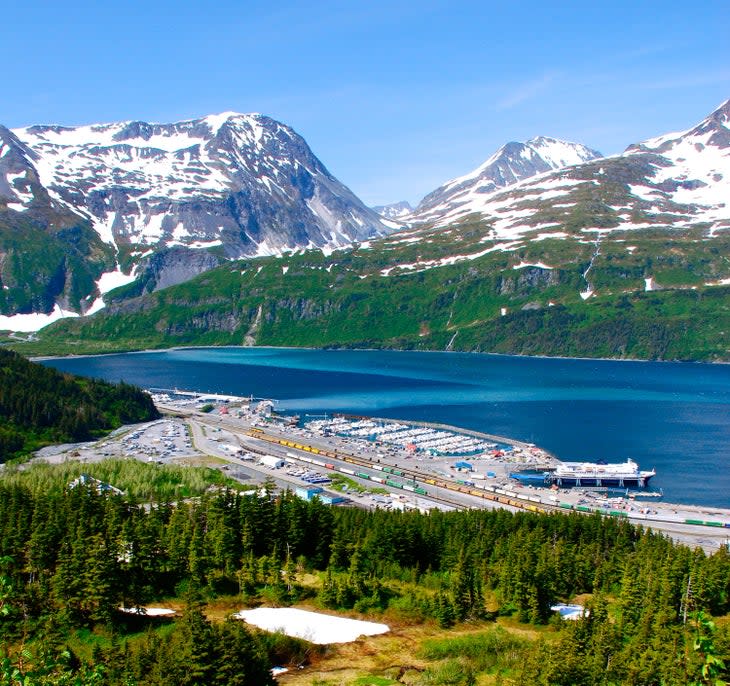
You'll disembark at Whittier, which sits on the western edge of Prince William Sound. You may not know this, but Whittier was once a "secret port" developed by the U.S. Army during World War II. The 14-story Begich Towers that rise up from town were built during wartime and today house most of the locals. You can do a historic downtown walking tour to learn more about this history, capping it off with a stop at Prince William Sound Museum, housed in the Anchor Inn, which reveals Alaska’s role in the war with all sorts of memorabilia and stories.
If you're looking for a wild experience, take advantage of the unique opportunity to safely view muskox, reindeer, moose, caribou, wolves and more at the Alaska Wildlife Conservation Center. Just 11 miles out of town, it's a stunning 200-acre wildlife sanctuary. Walk, ride your bike or drive around the 1.5-mile wildlife loop to see more than 100 animals who have been orphaned or injured in the wild and now live permanently on the property. Don't miss Artemis the muskox who looks like an animal from ancient times. She arrived here as a calf after a bear attack at an oil facility in Prudhoe Bay, Alaska, separated her from her herd. Some of these animals have appeared in the Disney Plus series Alaska Animal Rescue.
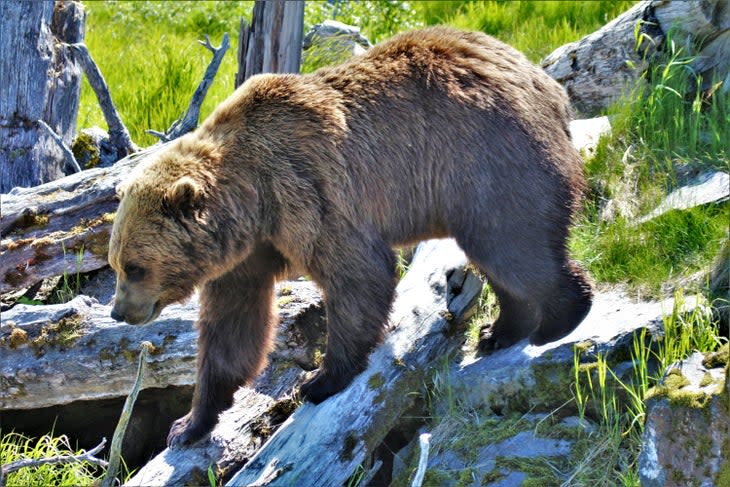
Beyond the sanctuary, there's all sorts of adventures you can do right from Whittier, from a glacier cruise to jetskiing. Whittier is also home to a number of protected coves that are easy to access and make for great sea kayaking. At Glacier Jetski Adventures, you'll put on fully enclosed helmets with a built-in hands-free communication system from guide to guest, plus breathable, dry suits to keep you toasty as you join a small group to see glaciers up-close.
On boat cruises, you can learn how to fish for salmon, halibut and even shark. Or go on a sightseeing cruise to see dozens of glaciers during a half day boat ride. On land, head to Portage Pass Trail, which has strenuous sections but is doable for active families. You'll get beautiful views of Portage Glacier and the town of Whittier. The road to the trailhead is known for its potholes, so ask staff at your hotel or cafe about road conditions before you head out.
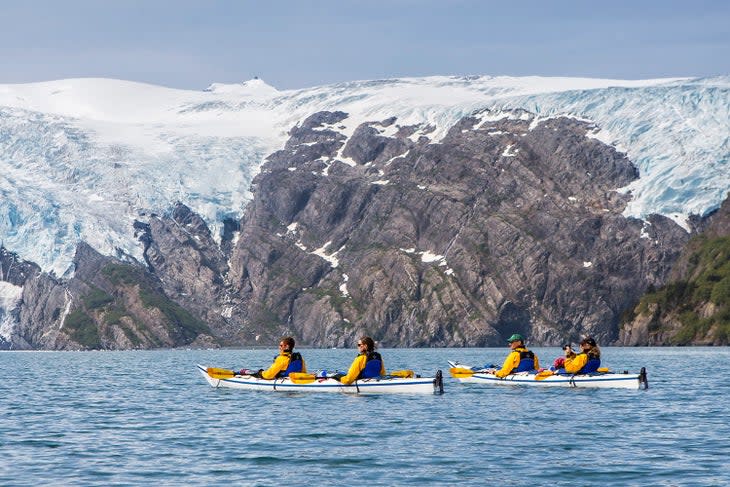
Lastly, Whittier is home to the Anton Anderson Memorial Tunnel. North America's longest highway tunnel stretching 2.5 miles. You'll go through this tunnel by train or car to get to Anchorage and to Denali National Park. We'll elaborate on this tunnel later in this itinerary as you make your way back up from Seward to Whittier.
Visit Seward, Gateway to Kenai Fjords National Park
From Whittier, head south on a two-hour drive to Seward, a fantastic destination in its own right, which lies just minutes from Kenai Fjords National Park.
One of its claims to fame is that it was the original starting point for what later became known as the Iditarod, the famous Alaskan sled dog race. When the trail started at Seward, it was part of a 2,300-mile trail system, some that had been used by Alaskan Natives for thousands of years, that beelined for the state's gold mining areas like the Iditarod Mining District before eventually reaching Nome. During the Alaskan Gold Rush, it was the most efficient way of delivering mail and critical supplies overland in winter.
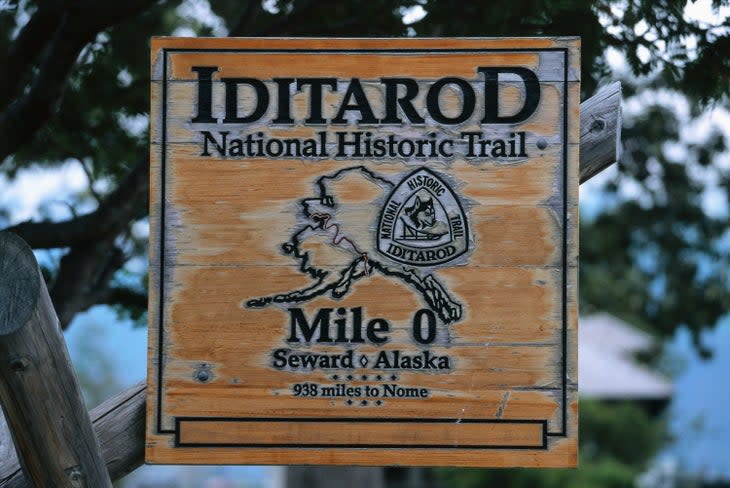
Today, the Iditarod is a rugged race that begins in Anchorage. But a fair number of Iditarod mushers, sled dogs and their puppies live in Seward, and you can go on dog sledding tours year-round here. At Turning Heads Kennel, you can take a breathtaking 15-minute helicopter ride over Godwin Glacier and then land down below for a 30-minute dog sled ride.
Unique to Seward is the Alaska SeaLife Center, Alaska's only public aquarium with a research and wildlife rehabilitation center. Along the shores of Resurrection Bay, the aquarium features a variety of wildlife native to Alaska, with special opportunities for visitors to feed puffins, participate in a ringed seal feeding session and more. Advanced online reservations are recommended.
"It's a step above your normal aquarium," says Kat Sorensen, communications director for Seward Chamber of Commerce. "You can be any age and find something interesting."

In downtown Seward, you'll discover why Seward was officially named the "Mural Capital of Alaska" in 2008. There are 20-plus murals, covering all sorts of nuggets of Seward's history and natural beauty, including ones commemorating Kenai Fjords National Park, commercial fishermen, the Iditarod and more. Stop in the Seward Visitor Center to get a map of the murals to do a fun walking tour. Before starting your self-guided tour, grab a cup of coffee and freshly baked scone at Resurrect Art and Coffee House/Art Gallery, a charming sweet spot that occupies a former church. The walls feature local artists' work.
"Seward has such a cool artists' scene, and it's indicative of our independent spirit," Sorensen says.
Afterwards, get a bird's eye view, literally, of the temperate rainforest that surrounds Seward when you go ziplining. Flying above the rainforest gives you an entirely different perspective on the dramatic landscape that hugs the Alaskan coastline. Stoney Creek Canopy Adventures offers a three-hour zipline canopy tour with eight ziplines, three suspension bridges and two rappels.
"We have a temperate rainforest climate, so our tree canopies are stunning," Sorensen says. "This gives you a chance to soar above the trees but be surrounded by the mountains."
For dinner head to The Cookery where chef Kevin Lane cooks up incredible dishes with an emphasis on local food, including locally foraged mushrooms when in season. It's a place where travelers and locals alike are eager to get a table, so make reservations in advance to guarantee a table.
At the end of the night, head back to your hotel room, cabin or home rental to get a good night's sleep before visiting Kenai Fjords National Park. Seward offers a variety of places to stay, with full-service hotels, including national chain hotels, Airbnbs, cabins, and camping two blocks from downtown. Don't forget to pack an eye mask since daylight lasts long into the night during the summer.
Founded in 1980, Kenai Fjords National Park is a fascinating park to explore by foot, water or air. It's just a 20-minute drive from downtown Seward. Learn all about the park and what to do in Kenai Fjords National Park.
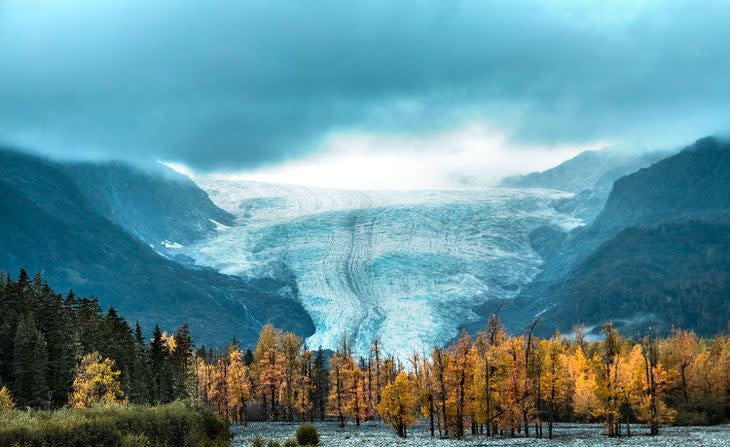
Seward to Denali National Park
Then head north back to Whittier, passing through Anchorage to reach Denali National Park. Whittier lies just 60 miles south of Anchorage, but you will need to go through the Anton Anderson Memorial Tunnel to get there. What's interesting about this tunnel is it's a one-lane tunnel, and the car lane travels over the railroad tracks. Because it's one-lane, you need to time your drive, so that the lane is open for the direction you're headed. From Whittier to Anchorage, cars leave on the hour from 6 a.m. to 11 p.m. Going from Anchorage to Whittier, cars leave on the half hour from 5:30 a.m. to 10:30 p.m. While the drive inside the tunnel can take only 10 minutes, plan on getting there 10 minutes early and allotting an extra 20-30 minutes of travel time because of potential delays, especially if there is a long line of cars.
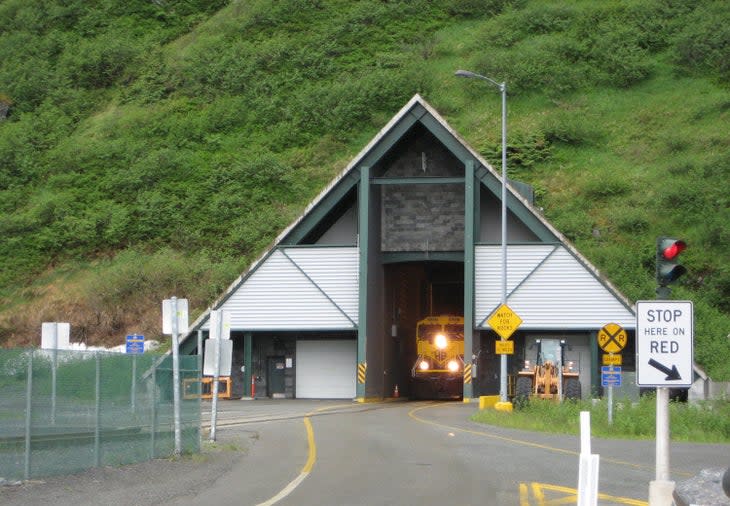
From Anchorage, you'll drive to Denali National Park on a beautiful 240-mile drive along the George Parks Highway, also known as Alaskan Hwy. 3. Or you can leave your car in the city and climb aboard the Denali Star Train to Denali National Park.
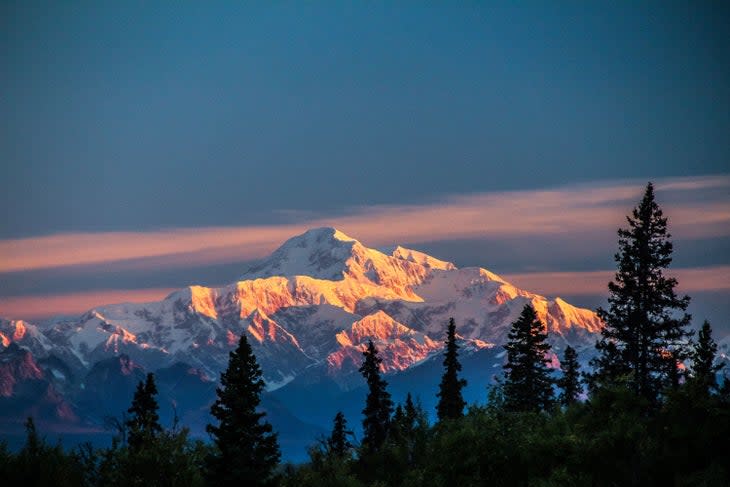
Learn more about Denali National Park from getting there, to what to do and where to stay.
Exploring Fairbanks and Wrangell-St. Elias National Park
After you've seen Denali National Park, you can take the train back to Anchorage and ferry to Valdez with your vehicle. Or continue on in your car or RV to Fairbanks, then Wrangell-St. Elias National Park & Preserve and then Valdez. This vehicle route will allow you to make a loop out of your travel in interior Alaska. Plus, Fairbanks, a bustling city of 100,000, is known for being a great place to see the northern lights, also known as aurora borealis. Don't miss the opportunity to see this incredible phenomenon. While there's a chance you can see the northern lights on any clear night, the best times to spot them are mid-August through mid-April.
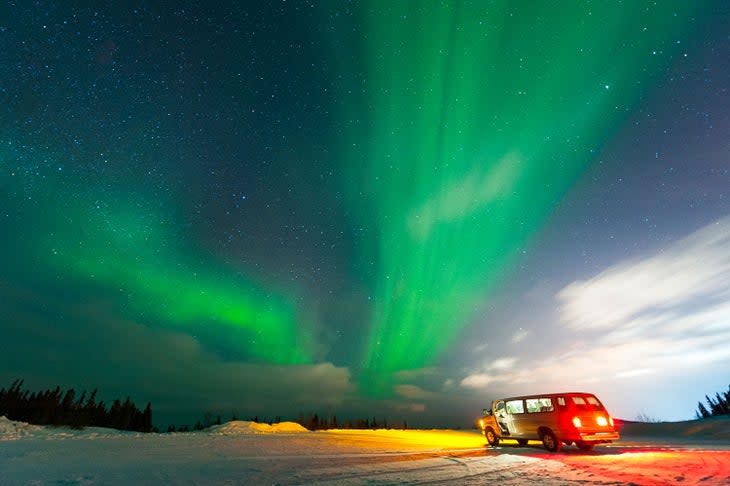
While you're in town, head to the University of Alaska Museum of the North to do a deep-dive into Alaskan cultural and natural history. There's the remains of an Ice Age bison here, along with the fossils of other ancient animals who were preserved in the permafrost and later discovered by miners digging for gold. Then stretch your legs at the Running Reindeer Ranch when you take a guided walk through a birch forest alongside the ranch's reindeer.
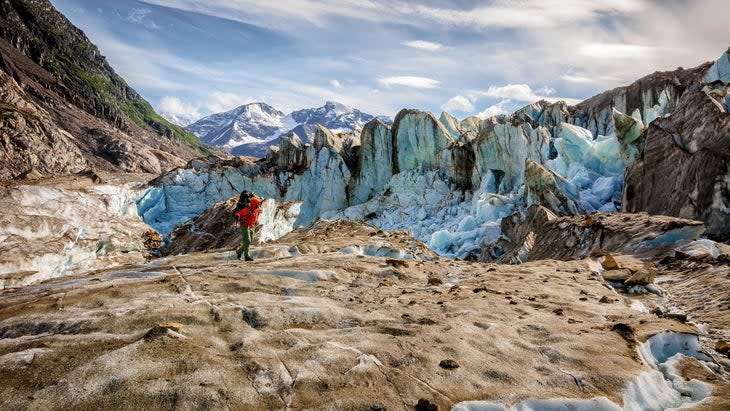
Then point your wheels south for a little over 4.5-hour drive to. The largest national park in the country, Wrangell-St. Elias National Park & Preserve offers incredible natural and cultural experiences.
Worthington Glacier and Valdez
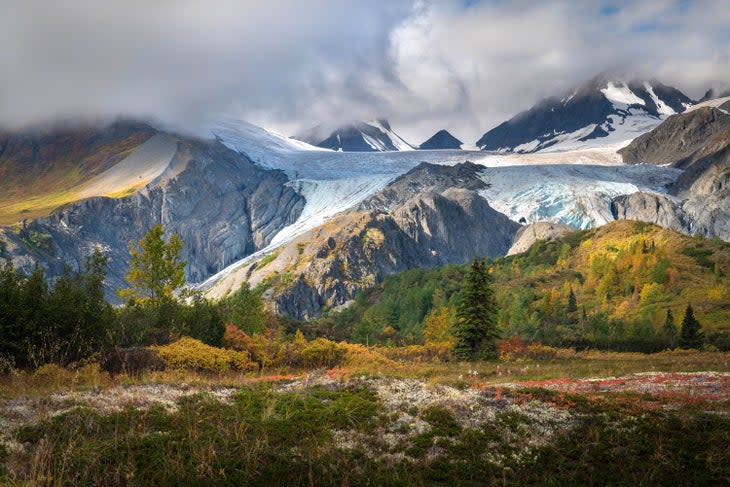
From Wrangell-St. Elias National Park & Preserve, you'll travel to Valdez, which is five hours away from Kennecott. As you get closer to town, you'll see Worthington Glacier, one of Alaska's most accessible glaciers. It's 29 miles east of Valdez, and it's a National Park Service site since it became a National Natural Landmark in 1968. Stop at milepost 29 at the recreation area where you can take a paved, wheelchair-accessible trail to the toe of the moraine. Then get back into your car and point your wheels over the striking 2,678-foot high Thompson Pass. Afterwards, you'll pass through Keystone Canyon, which is stunning and dotted with waterfalls like Horsetail Falls and Bridal Veil Falls.
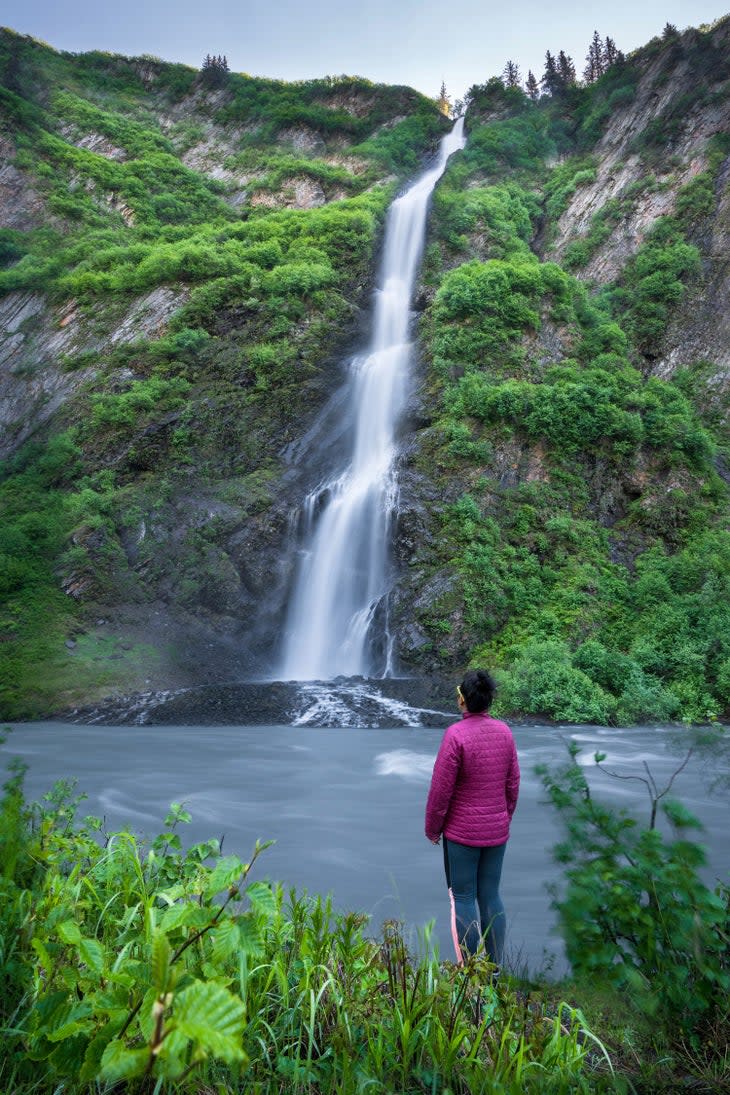
"I don't think there's a canyon in Alaska with waterfalls like these," says Keenan Britt, services and web manager at the Valdez Convention and Visitors Bureau.
Just before Horsetail Falls, park and take the Goat Trail for a 2.5-mile out-and-back hike along the Lowe River. It's at mile marker 13.5 on the Richardson Highway.
Top Things to Do in Valdez
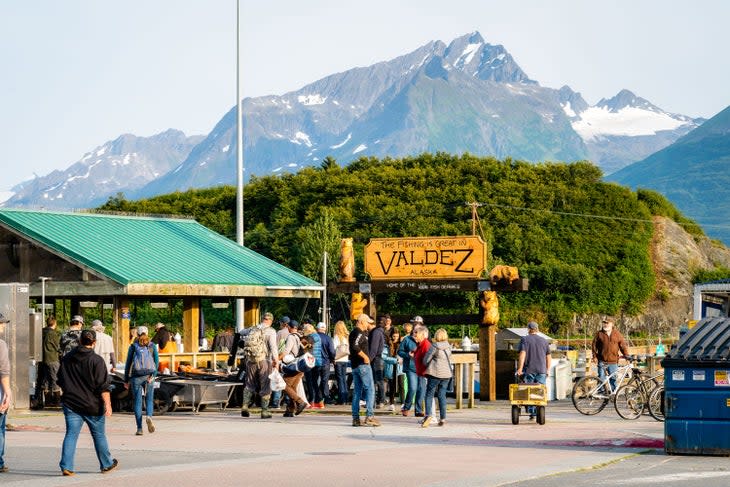
If you're looking for a one-stop shop to see Alaska's natural wonders, plan on spending a couple of nights in Valdez, the largest port town along Prince William Sound.
Pronounced "Valdeez," this town, whose name may be most recognizable in the Lower 48 for the Exxon Valdez oil tanker spill in 1989, offers so much for travelers. Nearly everything is walkable. Park your car in town and start exploring. You'll see that the Chugash Mountains are about a mile from where the ferry will pick you up in the port later in your stay, giving you a number of world-class sites within walking distance of each other.
"That's the thing with Valdez," says Juno Kim, director of tourism development of the Valdez Convention and Visitors Bureau. "Valdez being right on Prince William Sound is a great location. You can do a tour right from where you are. There's just great accessibility."
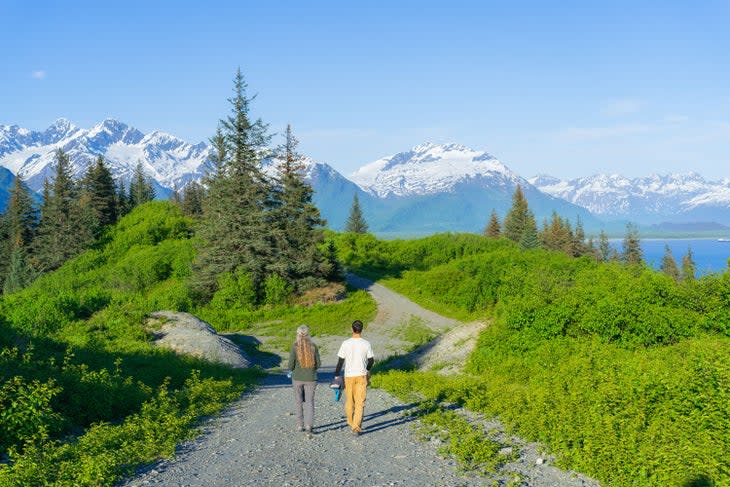
That includes the Meals Hill Trailhead, a brisk, 30-second walk from the ferry docks that gives you fantastic views within 30 minutes of walking. Valdez has great food trucks and a handful of restaurants within minutes of each other. Rogue's Garden, a health food store, along with three museums, is a several-minute walk from the docks. And guided kayak tours and boat cruises to see wildlife and glaciers, including Columbia Glacier, leave right from town, as do helicopter tours.
A few miles from town, guided kayaking tours at Valdez Glacier Lake enable travelers to paddle near the lake's namesake glacier, a rarity since most ferry travelers see sea-based glaciers.
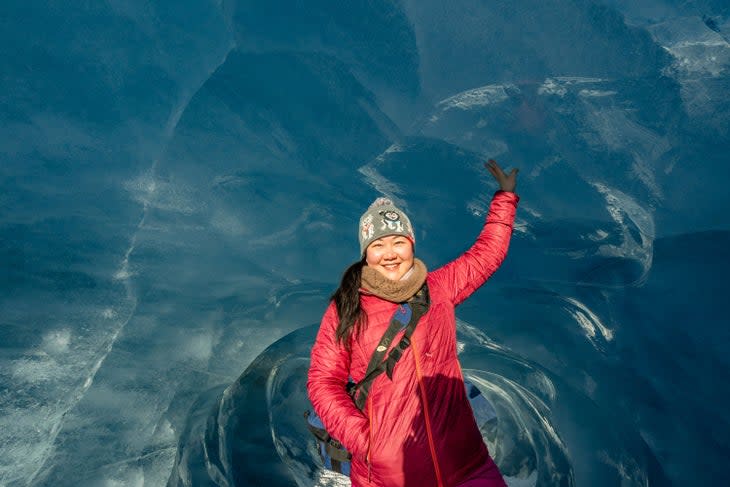
And if you enjoy longer walks or are looking for an excuse to rent an electric bike, the DOT Bike Path goes down Dayville Road to the Solomon Gulch Fish Hatchery, which is about 6 miles from the harbor. During your free, self-guided hatchery tour, read interpretive panels and watch the hatchery's excellent movies. It's likely you'll see sea lions, seals, bald eagles and bears hanging around to catch salmon in these waters where an estimated 250 million pink salmon and 1.2 million Coho salmon are raised and released before they return to spawn. It's dangerous to approach wildlife, including the sea lions on the beach, so keep your distance.
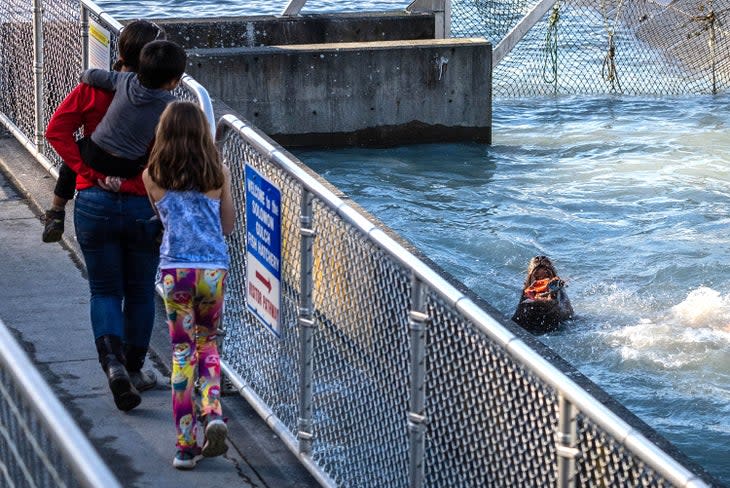
Another mile-and-a-half down the road, you can see the most southern end of the 800-mile Trans-Alaska Pipeline. Because of security, the area is closed and fenced off to visitors, but it's definitely worth checking out. Afterall, the pipe carries 1.8 million barrels of crude oil per today before it is loaded on tankers headed to the west coast of the United States to be refined.
Otherwise, rent a mountain bike (or drive in your car) and take the Mineral Creek Trail, a rough gravel road to explore the area's gold rush history. It's an easy 12-mile round-trip adventure that passes Horsetail Creek Falls and ends at a Gold Rush-era stamp mill.
At the end of the day, there's a range of lodging opportunities from a Best Western Inn and privately owned hotels to 10 RV and tent camping parks, cabin rentals and even a mountain chalet, Glacier Lookout, reachable only by hiking or a helicopter.
Wildlife you might not be expecting to see around town? Cute rabbits. Lots of them. They're feral domesticated rabbits, and it's widely disputed how they got here or really how long they've been around. Regardless of who released them, the rabbits have managed to do what they do best--reproduce--and Valdez's mild winters have enabled the rabbits to thrive like the town itself.
"Valdez is located on the water and at the base of a mountain range, so you can see a lot without a lot of effort," says Britt. "In Valdez, it happens to be all in one place."
Return Trip Home
When you're ready to head back home, take the MV Aurora ferry to Whittier to catch your mainline ferry back to Bellingham, Wash. Be sure to time your arrival with your return trip on the MV Kennicott since it departs a couple of times per month in the summer. It'll take 5 hours and 45 minutes on the Aurora to get to Whittier, so relax in the observation lounge, grab something to eat in its cafeteria-style restaurant and go to the movie lounge.
If you're feeling ready to take on the open road back to the Lower 48. It's a 40-hour drive, covering 2,238 miles that brings you from Alaska, into Yukon, Canada and British Columbia before arriving in Washington.
Book your ferry passage at www.FerryAlaska.com or call one of their reservations specialists at 1-800-642-0066.
For exclusive access to all of our fitness, gear, adventure, and travel stories, plus discounts on trips, events, and gear, sign up for Outside+ today.

